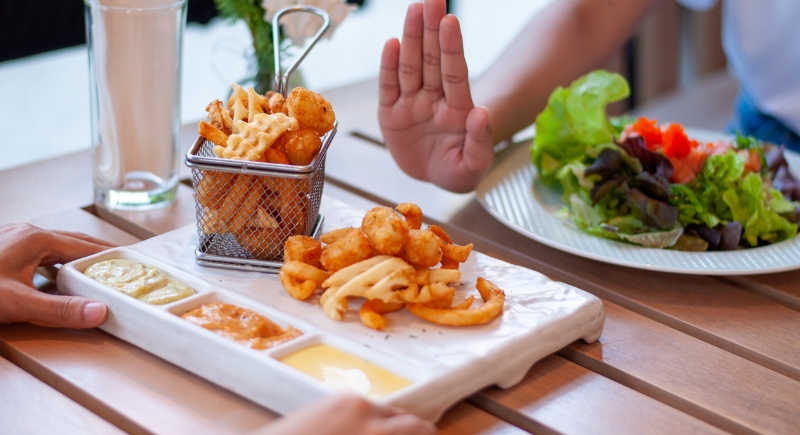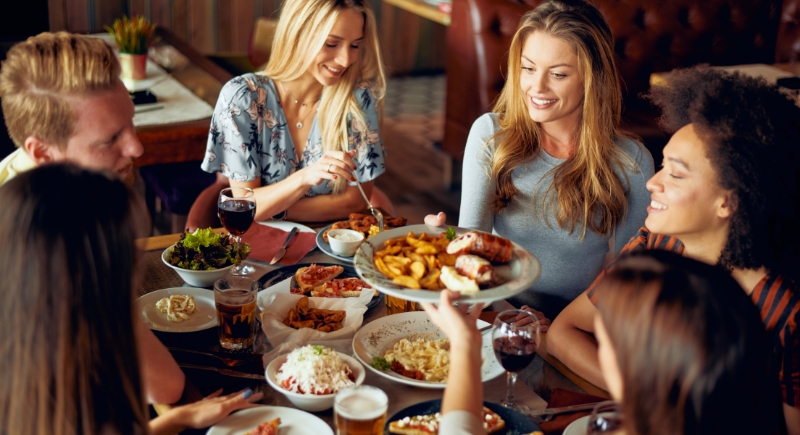How Your Age Shapes the Way You Dine Out
Trying a new restaurant can feel like a tiny adventure, but what sparks that choice isn’t the same for everyone. Age reshapes our reasons for going out, the tools we trust, and the type of experience we seek.
A recent nationwide survey uncovered some fascinating shifts across generations. And here’s how they play out at the table.
Gen Z Follows the Feed

Credit: iStockphoto
Scroll through enough short videos, and a late-night craving can turn into a table reservation. About 72% of Gen Z say a single trending post can tip them toward a new spot, with quick visuals and flashy snippets doing more than hours of old-school research ever could.
Millennials Depend on Digital Reviews for Discovery

Credit: Canva
Over half of millennials search for restaurants through review platforms like Yelp and Google, far more than other generations. They still value personal recommendations, but their comfort with online ratings and filters helps them sift through options quickly, especially when planning a night out with friends.
Boomers Prioritize Calm and Reliability

Credit: freepik
Most boomers are less likely to enjoy a packed restaurant with blaring music. About 90% prioritize a relaxed setting and menus that feel familiar. Instead of chasing what’s new, they often return to places they know will treat them well and deliver exactly what they expect without surprises.
Gen X Balances Tech With Habit

Credit: pexels
Two-thirds of Gen X rely on review platforms, yet they often weigh that digital input against their usual haunts. Parking, ease of reservations, and knowing a place runs smoothly often outweigh hype. Their choices are thoughtful rather than reactive.
Appetite Itself Changes With Age

Credit: pexels
Plenty of younger adults head out because a friend suggested it, not because they’re hungry. By midlife, stress can play a bigger role in appetite, and some weeks feel unpredictable. For older diners, health changes often lead to smaller plates or menus centered on nutrition over volume.
Inflation Reshapes Decisions Across Groups

Credit: freepik
Nearly 86% of diners have adjusted their habits due to rising costs. Boomers lead in scanning menus for fair prices, while younger people experiment by splitting plates or ordering appetizers as main courses. Many also search for specials before heading out to keep dining affordable.
Spontaneity Drives Younger Diners

Credit: iStockphoto
About 30% of surveyed diners try a new restaurant within a day of first hearing about it. Gen Z and millennials thrive on that spark. A sudden plan feels exciting, and they’re often ready to jump in without much forethought.
Gen Z Explores Beyond Familiar Flavors

Credit: Getty Images
Curiosity drives about a third of Gen Z to seek out menus offering cuisines they’ve never tried. There’s genuine interest in broadening their palate. Many say they enjoy the feeling of tasting something with roots beyond their usual go-to meals.
Millennials Actively Contribute to Review Culture

Credit: Getty Images
Millennials are the most likely to post thoughtful write-ups on Yelp or niche apps, sharing photos and tips for other diners. About 35% even take their feedback to general social media and shape the conversation around new restaurants.
Dining Out Remains Social, in Different Ways

Credit: pexels
Eating out with a partner is common across the board, but the why feels different. Boomers emphasize connection and uninterrupted talk, whereas younger adults often see restaurants as extensions of their identity, where a night out signals taste, status, or awareness of what’s trending.
Health Concerns Shape Midlife Choices

Credit: Canva
Between 35 and 65, many diners focus on lighter food, smaller portions, and menus that support specific diets. They might still join colleagues or friends for meals, but often choose venues that accommodate their health goals without sacrificing flavor or variety.
Older Adults Focus On Comfort and Access

Credit: iStockphoto
Past 65, small details like clear entryways, comfortable chairs, and manageable portions matter a great deal. Discounts or early-bird deals also make a restaurant feel approachable. It’s less about adventurous eating and more about enjoying a meal that fits smoothly into the day.
Reputation Matters to Younger Diners

Credit: iStockphoto
Gen Z and millennials admit they pick places partly for their reputation. Seeing a restaurant featured by influencers or getting high praise online sparks interest. This makes the visit feel like being part of a shared conversation rather than just a meal.
Routine Dominates for Many in Midlife

Credit: Getty Images
Even when intrigued by new menus, adults in their forties and fifties often end up back at their steady favorites. They appreciate restaurants where they know the vibe, staff, and portions, to make it feel more like a ritual.
Childhood Eating Habits Echo Later On

Credit: Getty Images
Memories of childhood meals can also shape adult decisions. Those encouraged to finish everything on their plate might still favor smaller portions, while others, hesitant around vegetables as kids, may hesitate with unfamiliar dishes. These patterns often surface when deciding what feels safe or exciting to order.